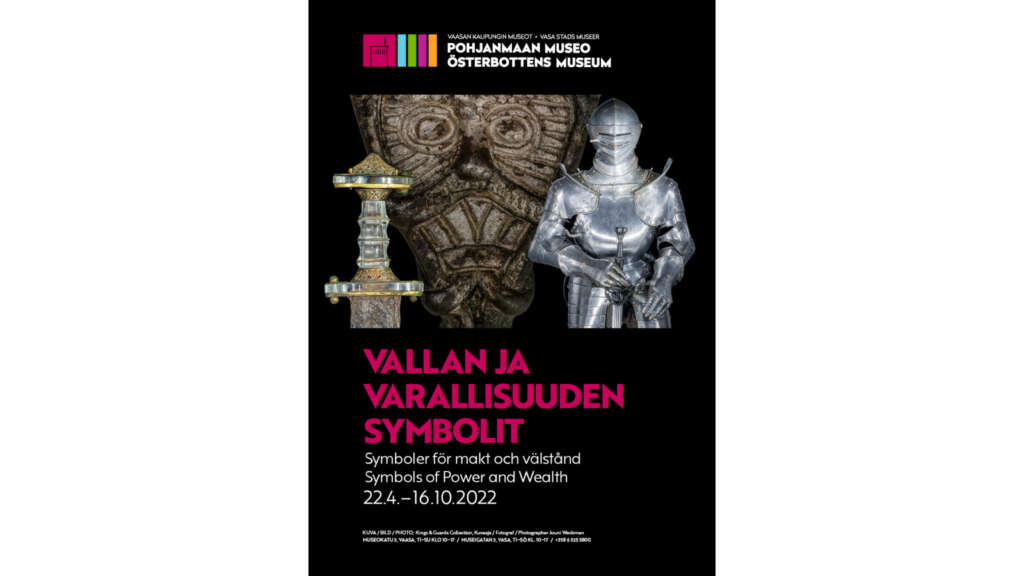
Symbols of Power and Wealth
Article categories: Museums & Folklore
The Ostrobothnian Museum’s summer exhibition takes a look back centuries ago
The Ostrobothnian Museum’s summer exhibition takes a look back centuries ago, during the time of knights and swords. The exhibition Symbols of Power and Wealth is displayed in the space for temporary exhibitions and it is based on the artefact collections of antique dealer and expert Peter Mustonen. These include historic weapons, armor, protective gear, and jewelry from the Viking warriors. The main theme of the exhibition is weapons and armor as symbols of power and wealth. The exhibition presents the diversity and evolution history of weapons and armor from the 8th century Viking Age to the 17th century Baroque period and consists of more than a hundred objects. Most of them originate from Europe, and in addition, the exhibition presents military historical artifacts from India, Persia and Japan.
The visitor can get acquainted with the swords and early shields from different time periods, including the Viking age and the Crusades. There are also other types of weapons decorated in many different ways, such as daggers, clubs, crossbows and early firearms, as well as oriental weapons. The sword was a symbol of chivalry and it remained the most significant side weapon of the cavalry on the European battlefields until the early 19th century. With the appearance of firearms, new war strategies, and larger armies, the traditional knight with his swords and shields soon remained history. However, loading the firearms was laborious so battles were still fought with sharp weapons, war hammers and spears.
The quality of the weapons began to improve starting with the 14th century, and soldiers protected themselves by plates attached to chain mail armor. Armor covering the entire body was used from the 15th century until the middle of the 17th century, after which it became obsolete with the development of artillery and disposable weapons. Warriors and mercenaries of the lower class wore a chain shirt proved to be good during the Viking Age, which protected them from sword stabs or arrows. The exhibition shows one of the highest quality chain shirts in Europe from the 16th century and the visitor can also touch genuine pieces of the chain shirt.
The manufacturing of weapons and armor was an expensive form of craftsmanship. The weight of the armor was distributed almost evenly around the body, so the knight was able to move quite agilely when needed. The equipment of today’s army or firefighters weights almost the same as the equipment of an armored knight. The exhibition features several complete pieces of armor with gloves and helmets. In addition, the exhibition also shows a samurai armor with enforced breastplates made by the well-known Myochi family, as well as chain equipment from Persia and India.
The exhibition Symbols of Power and Wealth is written and produced by Peter Mustonen in collaboration with Vaasa City Museums. The exhibition has previously been on display in Pärnu and in the Kuressaare Episcopal Castle in Estonia. The objects in the collection were seen in Vapriikki’s popular Knights exhibition. All the objects on display in Tampere are also being exhibited in Vaasa.
Photo: Kings & Guards Collection, Jouni Weckman
